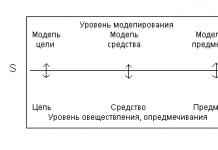1.
2.
3.
An integral role in the arrangement of any living space is invariably played by such important communications as the heating system. The devices that are part of it can not only heat the air in the room, but also form part of the interior, while a well-designed radiator will become a real decoration of any living area.
However, old batteries with peeling paint are unlikely to be able to decorate the house in any way, so the owners find a solution to this problem by replacing old equipment with new ones. This method is quite effective, but also very expensive. Therefore, it will be a much more reasonable decision in terms of savings.
It is worth noting that in the process of deciding what paint to paint heating radiators, you should opt for special compositions intended specifically for such structures. Their use will protect the surface of the radiator from corrosion and provide the unit with an aesthetic appearance. If previously it was customary to cover the functional parts of the heating exclusively with white compounds, today the materials for painting have a wide variety of shades, so choosing the option that will best suit the interior of the room being furnished will not be difficult.
What determines the choice of paint for batteries?
To figure out which paint is best for painting batteries, you should remember that the quality of the composition used directly depends on the final result of the work.
- resistance to high temperatures (at least 100°C);
- resistance to aggressive environments;
- wear resistance;
- absence of any harmful released substances.
These include:
- Acrylic enamels. Their production is carried out using solvents of organic origin, as a result of which during the drying process a characteristic and not very pleasant odor appears. However, such paints have a glossy shine that will not disappear even after many years of use.
- Alkyd enamels. Such compositions are very resistant to high temperatures and are wear-resistant. In addition, you can always choose the desired shade, since these paints are available in a rich range of colors. The main drawback of these enamels is the unpleasant odor, which not only persists for several days immediately after painting work, but can also reappear when the radiator is overheated.
- Water-based paints. This option is considered optimal among consumers, since this odorless paint for batteries dries very quickly (more details: ""). However, when choosing such a composition, it is very important to pay attention to its packaging, which must include information about the possibility of applying such paint to elements of the heating system. High-quality, odorless paint for radiators cannot be cheap.
Thus, we can say that the only odorless battery paint is water-dispersion, so it is this material that you should pay special attention to.

Less often today, oil-based paint is used, since such a composition has become obsolete over time and has given way to more modern paint and varnish products.
Preparation before painting radiators
It is important not only to decide which paint is best to paint the batteries, but also to carefully prepare the desired surface for processing. An important fact is that the preparatory activities themselves take much more time than the process itself.The procedure should be as follows:
- The surface of the radiator must be thoroughly cleaned, removing old paint from it and cleaning areas with rust. Dust and dirt should also be removed with a cloth.
- Next, you need to apply a solution to the battery to wash off the old coating, and then cover it with a film to soften it. Next, the paint can be easily removed using a construction spatula or a grinding machine equipped with (read: “How and how to remove paint from a heating radiator - means for removing old paint before painting a radiator”).
- After this, the already cleaned surface is sanded with sandpaper and degreased using any solution with a small amount of alkali.
- A primer with anti-corrosion properties is applied to the already cleaned surface, which not only prevents the appearance of harmful formations, but also increases the adhesive properties of the paint. It is best to use an alkyd primer for these purposes.

The process of painting a heating radiator
Having finally decided on what paint to paint the radiators with, all actions should be performed in accordance with the following order:- Initially, you need to protect the floor from contamination by covering it so that paint stains do not fall on it. Unnecessary paper (for example, old wallpaper) or fabric is perfect for these purposes.
- Then you should choose brushes that have soft bristles. In this case, one of them should have a straight shape, and the other should be curved so that paint can be applied to the most inaccessible areas of the radiator.
- You must first apply the coloring composition at the top of the battery, gradually moving towards its bottom. At the same time, do not forget that you need to paint all areas of the radiator, starting with the internal ceilings and ending with the external ones. This is done in this order so as not to accidentally stain your clothes or hands. After the first layer of the composition has dried, you need to apply the second. Experienced craftsmen recommend: regardless of what paint to paint cast iron batteries or batteries made of another material, it would be much more correct to apply two thin layers rather than one thick one, since in the first case it will be possible to ensure uniform paint coverage. Read also: "".
By performing all the above steps in exactly this sequence, you will be able to achieve a perfectly flat and smooth surface of the radiator, and the applied paint itself will last a very long time (read also: " "). The main thing is to choose the right composition that will be most suitable for a specific heating battery.
If necessary, you can always study various photos of color options for these devices in order to best choose the desired color scheme for yourself.
Tips for painting radiators in the video:
Paint for radiators must meet special requirements, withstand temperatures up to 80-90 ° C, protect the metal from rust, and at the same time maintain color. Special paints for metal radiators fully meet these requirements. Other universal paints and enamels have similar properties, but they can withstand temperatures only up to 60˚C. It is worth noting that in many heating systems the batteries practically do not warm up to this temperature. In this article we will talk about what is the best paint to choose for radiators so that it meets all the requirements.
Please note that simple paints and enamels, although used for painting radiators, quite often turn yellow and begin to crack due to high temperatures.
Surface preparation before painting
If the old paint remains intact, has no unevenness, and is laid in no more than three layers, it will be enough to go over the entire surface with fine-grained sandpaper. This will improve the adhesion of the new coat of paint to the surface. After this, the surface is degreased with gasoline or acetone. Everything is thoroughly cleaned again, and they move on to painting.
If the paint layer is old enough and has begun to deteriorate, you first need to clean the heating battery. It is necessary to remove all its layers until only metal remains. This can be done with sandpaper, a drill with a special attachment, or a special remover for fired paint.
After all the old coating has been removed, the remains are cleaned up. A drill with a cord brush is suitable for this. Next, thoroughly degrease the surfaces and cover them with a primer mixture. As a primer for heating systems, it is best to take the GF-021 brand. For the best protection, it is best to use mixtures designed for automobiles. But, by and large, you can use any metal product that has anti-corrosion properties. The batteries begin to be painted after the primer has completely dried.
Selecting paint for radiators - which one is better to paint?
When deciding on paint for radiators, study the label: it should contain the phrase “paint for heating radiators.” The font in some cases may differ; sometimes it can be seen in small letters in the “scope of application” section. If you do not find such a phrase, then it is better not to purchase this product.

Among other things, the manufacturer's name must be on the label. There are often cases when special craftsmen copy the design of well-known brands almost 100%, while seeming to “forget” to indicate the name of the manufacturer. It is better not to pay attention to such enamel for radiators, since, most likely, you will receive a low-quality product, and odorless paint for radiators is out of the question. Batteries painted with this composition will stink for more than one week. There have been cases when it was necessary to remove a layer of such paint using a remover and start all over again, only this time using a quality product.
Matte and glossy paints
Some may wonder what paint to paint radiators with, matte or glossy. In this case, there is no clear answer. All flaws are visible on the glossy surface, and when bright light falls on it, you will clearly see them all. With a matte finish, everything doesn't look so sad.
However, matte enamel loses color over time. This happens because due to the porosity of the layer, dust gets clogged into it. In this regard, experts recommend using white paint for radiators in glossy or semi-gloss tones.
Paint for cast iron radiators
If you decide to cover MS-140 cast iron radiators with glossy paint, then on their surface you will be able to see all the roughness, which, due to the shine, will become even more pronounced. Matte paint will make the batteries look more grey. It may seem like there is no way out, but the problem can be solved.

There are several options for solving this problem:
- Choose multi-colored acrylic enamel for radiators. The fact is that white color looks organic only on light or completely white surfaces. But in all other cases, designers advise painting radiators in a shade close to the color of the walls. Therefore, for cast iron radiators you can freely use matte enamel without fear that it will turn gray and lose color. Hammer paint with a textured pattern performed well - after painting, defects on the surface are invisible.
- Of course, there are times when the only solution is white paint for heating radiators. However, be prepared for the fact that radiators will require repainting after about 2-3 years.
- Alternatively, defects in the surface of radiators can be pre-leveled with putty - polyester for cars or epoxy. Before puttying, the surface is degreased and primed. Then the radiator is sanded, dust removed with a dry cloth and painted. With this approach, both glossy and semi-gloss shades of paint will look equally beautiful. However, be prepared for a lot of hard work. Although the end result will please you.
Thanks to the presented options, you can more freely approach the choice of suitable paint for heating radiators.
Types of paints for batteries
Painting compositions for heating radiators can be acrylic, alkyd, as well as their variants on various bases.
Alkyd enamel
Alkyd enamel for heating radiators is available in a wide range of colors. Although it has a slight odor, it dissipates quickly. In addition, such dyes are characterized by color fastness.
Depending on the basis there are:
- Solvent based alkyd enamel for radiators. This enamel has a very strong pungent odor, although the surface is beautiful and glossy. The most commonly purchased enamel is PF-115. Sometimes they choose Pesto enamel - its disadvantage is that it requires tinting with blue pigment to avoid yellowing.
- Silicone enamel turns matte. As a rule, this group contains heat-resistant paints with a temperature threshold of up to 600 ℃. Sometimes they produce aerosol paints for heating radiators from this category - they are much easier to apply.
- Water-based paint for radiators. These paints vary in their area of application. In particular, heat-resistant types of enamel are used for radiators so that they do not darken over time. In white enamel, titanium pigment is desirable. The main guideline when choosing quality paint is its price.
Acrylic paints
The surface texture of dried acrylic enamel is similar to plastic, both in visual and tactile sensations. The advantages of acrylic paint for heating radiators are that it adheres well to the surface and is easy to clean. Some varieties of such enamel are practically odorless because they are water-based. However, you need to choose acrylic paint for batteries that is heat-resistant.
For these purposes, you can purchase VD-AK-1179 paint. True, it requires preliminary priming of the surface to be painted. This enamel dries for 2 hours between layers and 24 hours completely.

Another type of acrylic enamel for heating radiators is “Thermakrill” from the company ALP ENAMEL. This paint has a specific smell, however, it contains anti-corrosion additives. Can withstand temperatures up to 120℃, used for surfaces made of any metal, in particular low-carbon and stainless steel, titanium and aluminum alloys, protects them from oxidation. Has a wide palette of shades. Partial drying for repainting occurs after 20-30 minutes at 20 ℃, and the paint will dry completely after 2 days.
There are a lot of options for acrylic enamels, so everyone can choose a paint to suit their taste.
Oil based paint
Since such compositions quickly lose their original appearance - the color changes, the shine disappears, cracks appear - they are almost never used for painting heating appliances.
Hammer enamel
Hammer paint for painting radiators is a type of alkyd enamel that allows you to create a textured surface and mask defects only with paint. Various pigments can create a hammered texture, the effect of hammer blows and other interesting solutions.
Before painting, the surface is prepared in the usual way - cleaned, sanded, primed, degreased. If the working surface is smooth, it is sanded to obtain small irregularities.
Powder dyes
With the help of such dyes, steel, bimetallic and aluminum batteries are painted under production conditions. For home painting, it is used very rarely due to the need for a special tool - a spray gun. Although some services rent out such equipment.
According to the technology, a negative charge is transferred to the cleaned part, and a positive charge to the powder paint. To do this, you need a diesel generator that produces current at a voltage of 25-30 kV with a power of a fraction of an ampere.

The potential difference allows the powder to be evenly sprayed over the entire surface to be painted. The next step is to polymerize the dye so that it becomes rigid. It is performed by heating the product to a certain temperature. Its range is from 170-200℃ to 350℃.
The lower temperature threshold can be created with a heat gun, but to pump up high temperatures you will need a furnace that will gradually warm up the product. Alternatively, you can use paint that polymerizes under the influence of ultraviolet light. Then in a closed room it is enough to turn on a special lamp for a specified time.
Be that as it may, such technology is difficult to implement at home. You may be able to have your radiator painted in an equipped auto repair shop.
Thus, from all the options for paints for radiators, everyone can choose the most suitable and most affordable one. Even if it is oil paint, this is not a relevant choice, but it has a right to exist.
Radiator paints without odor
There is a separate category of paints and varnishes - odorless dispersion acrylic paint for radiators. And although it cannot be said that it has no smell at all, it is not sharp and is almost invisible. Please note that you need to purchase paint specially designed for radiators, designed for use at high temperatures - the manufacturer indicates these indicators on the label.
It is worth noting that the odorless paint for batteries is quick-drying, easy to apply and lays down in an even layer, does not lose color or crack. You can choose from semi-gloss and gloss shades.

Before painting the surface with water-based paints, it must be primed so that rust does not seep through the pigment.
In addition, you can purchase Element paints from Eskaro, Aqua-Heizkorperlack from Dufa, as well as odorless materials from Triora, Thermo, Dufa Retail and others.
Radiator paint thinner
Of course, the new one will fit tightly and evenly only if the old coating from the radiators is completely removed. In order not to waste time scraping the metal by hand or stripping it with a drill and brush, you can use special gel removers. This composition is applied to the surface of the radiator and left for a certain time. When the paint softens, simply scrape it off with a spatula.
You can apply paint remover with an old brush with natural bristles or a metal or wooden spatula. Among the various wash options, there are aerosol types of wash. In order not to damage neighboring surfaces, before spraying the composition, cover all nearby objects with film.
Manufacturers indicate the exposure time for various compositions on the packaging. After a specified period, the old coating becomes soft enough that it can be removed without difficulty.

Although the remover contains chemically active components, they do not damage metal and wooden objects, as well as skin. But it is still better to use gloves when working. Residues from the radiator can be washed off with plain water.
Such brands of remover as B-52 or SP-6 performed well. Domestic and foreign manufacturers produce many analogues of such substances, varying in price and depth of penetration.
conclusions
As it became clear, the range of types and colors of dyes for radiators is very extensive. When purchasing, you will need to choose the color and type of paint - matte, semi-gloss or gloss. In addition, it is important to decide what kind of paint you want to buy - alkyd enamel or acrylic. The last step is to select a manufacturer.
Over time, old batteries lose their aesthetic appearance, rust appears, cracks appear in the coating, and paint peels off. Agree, changing the radiator in this case is not the best idea. It is much easier, faster and more economical to repaint the battery. Moreover, it is quite easy to update the appearance of the heating device.
We will help you choose the appropriate enamel composition, explain how to prepare and how to paint the heating radiator correctly. We will also outline the nuances that should be taken into account when working with different types of radiators.
The proposed photo ideas will inspire you to choose an interesting solution and implement your design idea.
It is not always possible financially, and in many cases even technically, to install a new radiator. It is easier to refresh the outside of the heating device if it is still capable of serving. If the battery has already had to be repaired or does not heat well, then it is better.
The painting process as such is not particularly difficult, but this does not mean that you can buy any composition and immediately begin restoring the attractiveness of the radiator.
The paint must be selected according to certain parameters, and the battery must be carefully prepared. If this is not done, the new coating will not last long, and you will soon have to repeat the process again.
An old cast iron battery with peeling paint looks very unaesthetic. In addition, the material of its body is subject to oxidation and rusts.
When choosing a composition, it is best to focus on options specifically designed for heating devices. But if there is no such inscription on the label, you should carefully study the instructions and find data on its heat resistance.
Requirements for paint coating:
- Heat resistance. The composition applied to the radiator body must withstand temperatures up to 80-90 degrees and be flawless for the time promised by the manufacturer.
- Adhesion. It is necessary that the composition has good adhesion to the surface to be painted. Did not peel off when heated and alternating heating/cooling.
- Corrosion protection. The composition must contain anti-corrosion substances so that the coating in direct contact with the body does not cause its destruction.
- Color fastness. Unconditional condition, because Radiators are painted for aesthetic purposes, among other reasons.
- Abrasion resistance. From direct contact with various furnishings, drying items, etc. the coating should not become thin.
- Safety. It is very important that the composition does not contain any components harmful to health.
Radiators are used in apartment buildings to heat the premises. In addition to their main function, they are an integral part of the interior. To maintain their original aesthetic appearance, they require periodic painting. To do this, it is better to purchase special odorless paint for radiators. It withstands high temperatures remarkably well, does not crack or peel.
Show all
Product selection conditions

 Mixtures for painting radiators differ significantly from other types of paints. In this regard, manufacturers recommend that you read the instructions and other information on using the product before purchasing it.
Mixtures for painting radiators differ significantly from other types of paints. In this regard, manufacturers recommend that you read the instructions and other information on using the product before purchasing it.Batteries are exposed to high temperatures during operation, so dyes must meet certain requirements. When purchasing a product, it is important to pay attention:

All these characteristics must be taken into account before purchasing the material. They affect the quality of operation and preserve the health of people living or working in rooms with radiators.
How to choose paint for batteries? How to paint a battery or radiators?


Types of materials
Manufacturers produce odorless radiator paint using various bases. Each of them has advantages and disadvantages. They should be taken into account when carrying out work to prevent unforeseen situations.


Based on the main substance and additional components included in the composition, paints are divided into quick-drying, heat-resistant, alkyd, oil-based and produced on the basis of aqueous dispersion or powder.


Oil enamels

 Formulations based on organic oils have been used for many years. They are characterized by a number of positive qualities, among which a high level of hiding power should be highlighted. Thanks to this factor, a durable and dense layer is obtained on the surface of the product after application. It perfectly withstands high temperatures and protects the radiator from mechanical stress.
Formulations based on organic oils have been used for many years. They are characterized by a number of positive qualities, among which a high level of hiding power should be highlighted. Thanks to this factor, a durable and dense layer is obtained on the surface of the product after application. It perfectly withstands high temperatures and protects the radiator from mechanical stress.Today the industry produces many alternative options. Oil based paints are practically are not used due to some flaws inherent in this product:
- 1. Specific smell. Such compositions smell unpleasant, not only at the stage of work, but also after their completion. When the radiator heats up too much, the enamel may give off an unpleasant odor.
- 2. High density. The paint is applied in a thick layer, which significantly reduces heat transfer from the radiator.
- 3. Difficulty in application. When applying this mixture it is difficult to achieve a perfectly even layer. If the layer turns out to be too thick, the enamel can crack and peel off during use.
- 4. Susceptibility to corrosion. An oil base does not protect metal well from moisture. Some time after painting, rust spots may appear.
- 5. Long drying period. This type of raw material takes a long time to dry completely. The structure of the mixture rarely allows it to be applied to the surface without the formation of smudges.
Due to all the existing shortcomings, it is difficult to call this material suitable for painting radiators. The main advantage of this product is its low cost.


Alkyd compositions

 The composition of alkyd enamel is based on dispersions of pigments and special additives with glyphthalic or pentaphthalic varnish. Due to their reliability and ability to give an aesthetic appearance to the product, they are in demand.
The composition of alkyd enamel is based on dispersions of pigments and special additives with glyphthalic or pentaphthalic varnish. Due to their reliability and ability to give an aesthetic appearance to the product, they are in demand.Alkyd paints withstands the highest temperatures, which can be with water heating. Manufacturers usually indicate acceptable temperature parameters on the packaging. After application to the surface, the enamel does not peel off, does not change shade, but retains its smoothness and even gloss.
Products of this type are available in a wide range of colors and are resistant to mechanical stress. Among the disadvantages are unpleasant pungent odor, which is formed due to white spirit included in the product. It is released not only during the period of battery painting, but also at the beginning of the heating season.
Drying time can delay repair work. To achieve optimal appearance, it is necessary to coat the radiator with paint in several layers (at least twice). Some manufacturers produce their products in spray form for convenience.
Acrylic heat-resistant mixtures
These compounds are often used for painting heating systems due to the evenness and smoothness of the surface after drying. They do not emit an unpleasant odor not only during work, but also during the operation of the batteries.


When buying odorless acrylic paint for radiators, you should carefully consider the packaging, on which the manufacturer indicates the area of use of the product. Particular attention must be paid to the temperature that the enamel can withstand.
Acrylic based paints dry quickly. This time may vary depending on the manufacturer and ranges from ten minutes to one and a half hours. It takes about five hours for one layer to dry completely. To obtain a high-quality coating, it is necessary to avoid getting water on the surface until it is completely dry.
Acrylic mixtures have a thick consistency, like sour cream, which allows you to avoid smudges during work. To prolong performance, the composition should be applied to a surface coated with a primer in two layers. A significant disadvantage is considered to be instability to mechanical damage. Due to this property, you should not use abrasive cleaning agents to clean the surface.
Alkyd or acrylic enamel - which is better?
Silicone based products

 Silicone-based products are able to maintain their original appearance even at very high temperatures. Silicone resin is used as the main ingredient. It is mixed using an aqueous or organic solvent. After painting, the paint acquires a semi-matte shine.
Silicone-based products are able to maintain their original appearance even at very high temperatures. Silicone resin is used as the main ingredient. It is mixed using an aqueous or organic solvent. After painting, the paint acquires a semi-matte shine.To use it, it is not necessary to prepare the surface in advance. The silicone composition withstands mechanical stress, which allows it to be used for a long time. When compared with similar products, it turns out that the cost of these products is slightly higher. This indicator can be classified as a disadvantage.
Powder type products

 Paints of this type are produced on the basis of a special powder with pigments combined through special binding additives. This type of coating is recognized as the most durable and durable for radiators.
Paints of this type are produced on the basis of a special powder with pigments combined through special binding additives. This type of coating is recognized as the most durable and durable for radiators.But after studying the technological features, it becomes clear that it will not be possible to use it in everyday life for a number of reasons. For coloring it is necessary:
- 1. Use special equipment. With its help, paint will be sprayed onto the radiator, but its cost is quite high.
- 2. Apply constant voltage. This is required for applying the composition. The powder is given a positive charge and the surface is given a negative charge.
- 3. Install a special camera. The product is placed in a special chamber in which the desired temperature is maintained after applying the composition. The polymerization process takes place at + 170-350 degrees, depending on the characteristics of the mixture for coloring.
After studying these features, it becomes clear that achieving a full-fledged coloring process is only possible in production. It is possible to paint a heating system for home use using this technology if there is an auto body shop in the city with such equipment.
Glossy or matte surface
Any paint has two completely opposite final coatings: matte and glossy. Which one to choose for a particular heating device will be determined by its surface. Old style cast iron radiators have a rough finish. To hide this manufacturing defect, it is better to use glossy enamels: the shine will hide the unevenness. Cleaning on a glossy surface is easier, and the service life is longer.


The matte surface visually highlights all the flaws of the product. Porous - it will remain so after painting, which will contribute to the accumulation of dirt. A matte white composition applied to a cast iron radiator will soon acquire a gray tint. Cleaning this surface is quite problematic. In this case, the unpleasant color can be eliminated only after a new coloring.
Modern heating devices have a perfectly even coating, so any composition can be used to paint them. But when buying matte paint, you should carefully study the label. Sometimes manufacturers add fine chalk to products with a matte base for walls and ceilings. The presence of this ingredient will soon turn the batteries yellow. To maintain the natural whiteness of the radiator for the entire period of operation, you should choose products with titanium dioxide in the composition.
Tools for work
To carry out painting, it is not enough to buy suitable quick-drying, odorless paint for batteries.
You can get a high-quality result if you have the necessary equipment, among which should be:

The new product is much easier to work with than the old one. If you need to renew the coating of a radiator that has been used for its intended purpose for several years, you should first remove old paint residues from the surface.
The best tool for this is considered to be an electric grinder with a metal brush in the form of an attachment. A hair dryer is often used to remove the old coating inside the battery. It allows you to soften old raw materials and easily remove them later using a scraper.
If there are no power tools in the house, you can use a gel remover, which is sold in hardware stores. The mixture is applied to the surface and wait for the time indicated on the label. After the required time interval has passed, the old paint will soften and can be easily removed with a metal or wood spatula. When working, it is advisable to use rubber gloves to protect your hands.
Upon completion of the preparatory work, the actual painting of the product begins. The sequence of actions in this case is as follows:
- 1. The previously prepared surface is washed and dried, then degreased.
Frequently purchased product brands

 The building materials market offers products from different manufacturers. The most popular brands of alkyd enamels when purchasing odorless paint for batteries are: “Miranol”, “Jamaica 90”, “Tex” and some others.
The building materials market offers products from different manufacturers. The most popular brands of alkyd enamels when purchasing odorless paint for batteries are: “Miranol”, “Jamaica 90”, “Tex” and some others.Among acrylic paints, consumers choose the brands “Tikkurila”, “Barbados”, “Radiator Paint” and other equally well-known brands. Among water-based products, Tikkurila Thermal is in demand.
All commercially available brands of painting material differ in cost, properties and color palette. Due to the wide variety, each consumer will be able to choose the material for himself.
To preserve the health of people when painting at home or in office premises, it is necessary to use odorless material. The released toxic substances negatively affect the health of a person who is present in such a room for a long time.
Old, yellowed, damaged batteries will ruin the decorative effect of any interior. If the heating radiators work properly and do not require replacement, but the appearance needs updating, you can paint them. Painting radiators is not difficult, but it requires preparation and suitable materials.
What is the best paint for odorless radiators, how to properly prepare the surface, is a primer needed, is it possible to carry out painting work during the heating season - these and other questions are answered in this article.
In order for painting to give a high-quality result for many years, you need to choose the right paint to paint the heating radiators, observing a number of rules and conditions. Let's take a closer look at them.
Surface preparation
When preparing to paint, it is important to thoroughly prepare the surface to be painted. It is better to do the work in the summer, when the radiator is cold. If you have to paint during the heating season, you should turn off the hot water supply and wait a few hours for the radiators to cool down.
Attention! The maximum permissible temperature of the painted surface cannot exceed +30 degrees Celsius. At higher temperatures, the paint will dry too quickly and will not adhere firmly.
Painting a radiator is not a difficult task, but it requires the use of special paints and varnishes. Paint without a strong odor will provide an aesthetic appearance and comfort during further operation of the heating system.

It is necessary to properly prepare the surface to be painted and ensure drying conditions. Sometimes even a special paint for painting batteries with increased heat resistance and excellent adhesion to the surface can become damaged during operation - cracks and irregularities will appear.
Why do adverse events occur despite the use of specialized products? The main reason is improper surface preparation.
Old cast iron and steel batteries must be carefully prepared before being repainted: 
- The surface must be clean, dry and smooth.
- First, you should remove the old coating (if it is peeling off), thoroughly wipe the ribs with abrasive paper, wipe, and dry.
- The surface of the battery must be dry, free of dust, with degreased water and detergent.
- Old rusty coatings, rust should be removed using a wire brush or sandpaper.
- Copper elements should be rubbed with steel wool to remove dirt and patina.
- The metal parts of the radiator must be primed, preferably with an anti-corrosion primer.
What paint should I use for radiators?
To paint radiators, you need to use products specifically designed for this purpose. 
Types of paints
The paint must have a number of characteristics:
- increased heat resistance;
- do not turn yellow when exposed to heat;
- excellent adhesion to the surface.
Today, manufacturers offer paints designed specifically for painting radiators. These are mainly acrylic water-soluble paints with excellent properties. This can be acrylic paint or another one intended specifically for batteries and heating pipes, for example, phthalate.
Properties
- Smell. Acrylic paints and varnishes are diluted with water, they dry quickly, and do not have the intense odor that phthalates have. This must be taken into account when choosing paint.
- Transparency. The paint should have good opacity to avoid multiple layers. The more layers are applied, the less heat the battery gives off, and the heating efficiency decreases.
- Color. When choosing a color, it is worth remembering that radiators are updated quite rarely, so it is advisable to choose neutral colors, preferably white, which harmonizes perfectly with any interior design.
Assortment, prices, characteristics
A good paint should:
- works well with metal batteries;
- be resistant to high temperatures, do not turn yellow when exposed to heat;
- have good adhesion to the substrate, excellent covering properties;
- be durable and aesthetic.
Let's look at popular products.

 You can purchase spray paints specifically designed for painting batteries, allowing you to quickly cover hard-to-reach areas with old radiator fins and heating elements exposed to high temperatures (up to 80 degrees Celsius). The varnish dries quickly (about 30 minutes). Updating an old, unsightly radiator can be done quickly and simply; the resulting coating is durable and aesthetically pleasing.
You can purchase spray paints specifically designed for painting batteries, allowing you to quickly cover hard-to-reach areas with old radiator fins and heating elements exposed to high temperatures (up to 80 degrees Celsius). The varnish dries quickly (about 30 minutes). Updating an old, unsightly radiator can be done quickly and simply; the resulting coating is durable and aesthetically pleasing.
Snowboard multispray from the Snezhka brand is resistant to high temperatures and gives a pure white color. This is a high-quality varnish that creates smooth, durable coatings with increased resistance to mechanical damage. The special formula of the product protects painted objects from yellowing. Intended for indoor use.
How to paint a battery?
It is advisable to plan painting of heating radiators for the summer. It is preferable to carry out the work before the start of the heating season, otherwise you will need to temporarily turn off the heating system and wait until the battery cools down to room temperature. The radiator should not be too cold; the optimal temperature is in the range from +10 to + 30 °C.
- The floor and surrounding objects should be covered and protected from splashes - ordinary newspapers are ideal.
- Mix the paint thoroughly before starting work.
- We cover the heating radiator with 2-3 layers of enamel, maintaining the required time interval each time (usually 4 hours).
- Radiators can be coated with paint using a special flat soft brush, roller or sprayer.
Typically, flat brushes with a long handle are used. It is worth buying a special brush for painting batteries, which has a width of 26-63 millimeters.

When applying paint with a roller or brush, you need to make sure that the brushes do not lose their bristles when painting. It is important to avoid drips and uneven coverage. Radiators can be turned on after coating after approximately 24 hours. The exception is quick-drying varnishes.
Reasons for failure
A common reason for unsatisfactory painting results is failure to comply with the enamel drying conditions. It is risky to carry out work during the heating season, when the batteries can turn on and heat up. This common mistake usually ends in an unsightly result. High temperatures cause drying too quickly, weakening the resulting coating. Radiators can be painted at room temperature. Paints are resistant to temperatures up to 100 degrees Celsius, however this does not mean that they can be applied at such temperatures.
Conclusion
Hiding old radiators behind heavy curtains or furniture is not a good idea. By hiding radiators behind curtains, we restrict the flow of heat, reducing heating efficiency. Old, cast iron, steel batteries can be quite effective, they are durable and reliable, so replacement is not always advisable. However, it is difficult to consider them as a decorative element of the interior. Modern means can correct an aesthetic defect - old radiators can be painted. In order to get a beautiful, durable end result, it is important to properly prepare the surface, choose the right way to paint the batteries, choosing a paint with good resistance to high temperatures.

























